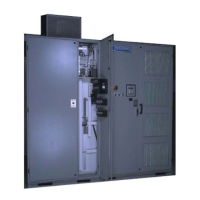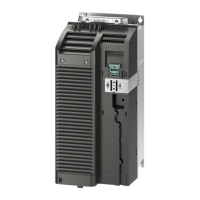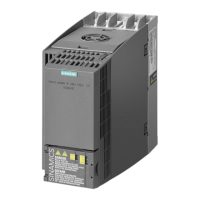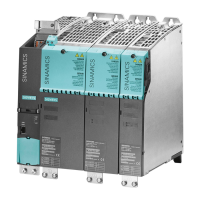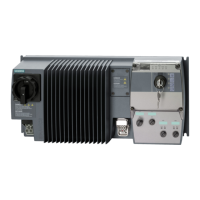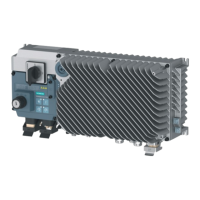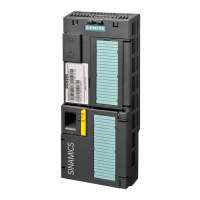Example: scrolling through the list of options within the main menu
After using the right arrow key [⇒] to reach the main menu, press the down arrow key [⇓] to
scroll through the list of options within the main menu.
These options may be parameters, pick lists, or submenus.
Refer to the next section for information about the structure of the menu system.
Example: incrementing or decrementing the velocity demand in manual mode
Use the up [⇑] and down [⇓] arrow keys to increment or decrement the desired velocity
demand when the system is in local manual mode.
As the up and down arrow keys are pressed, view the changes in desired velocity demand on the
display.
7KHYHORFLW\GHPDQGLV
GLVSOD\HGRQWKHIURQW
/&'SDQHORIWKH
3HUIHFW+DUPRQ\
8VHWKHXSDQGGRZQDUURZ
NH\VWRLQFUHDVHDQG
GHFUHDVHWKHYHORFLW\
GHPDQG
3ODFHWKHGULYHLQ
ORFDO0DQXDOPRGH
67$57
+$1'
,727
9/76
530
'(0'
02'(
Figure 9-4 Control Velocity Demand using Up and Down Arrow Keys
Note
Default assignment on the front panel display
The velocity demand eld (DEMD) on the front panel display is assigned by default.
This display assignment, and the other three variables, can be changed from the menu system.
Editing Parameter Values
The arrow keys can be used to edit the values of parameters.
Perform the following steps to edit a parameter value:
1. Navigate through the menu structure using the arrow keys and locate the parameter to be
changed.
2. With the parameter displayed, press the [ENTER] key.
This places the selected parameter into edit mode.
Once in edit mode, an underscore is displayed beneath the rst, i.e. the most signicant
position of the parameter value.
Software user interface
9.1 SIMATIC Keypad
NXGPro+ Control Manual
Operating Manual, A5E50491925A 351

